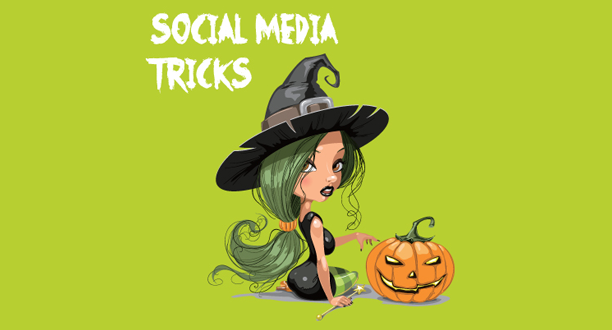
Social Media Tricks That Are Real Treats!
October 4, 2013
Don’t Let ‘Em Get Away: 6 Tips to Reduce Your Website’s Bounce Rate
October 10, 2013Some business blogs are a real nightmare to read. Here are some blog tricks to have your blog working like a dream.
1. Promote the crap out of your product.
Your readers are far too stupid to form their own opinions, so you should just spoon-feed them. Shove it down their throats, in fact. Why waste time explaining why your products are beneficial or giving them useful advice when you could just cut to the chase?
In all seriousness, though, post blog content that will benefit your readers – not you. That is the whole idea behind inbound marketing, after all. Yet I still see many business blogs making this mistake. A little self-promotion is okay, but don’t go overboard. As HubSpot once put it, don’t be “that guy” that everybody hates: the one who could go on and on about his or her life, but has no interest in yours.
Trick: if you would be embarrassed if a competitor read it; if it doesn’t help, direct or advise your customers and leads in any way; and if you wouldn’t do it if search engines didn’t exist… then it isn’t a sound practice.
2. Definitely don’t use any visual content.
Photos aren’t fun to look at and they don’t make your point any clearer. People want to look at long blocks of text. In fact, they’ll “X” out immediately if your blog post breaks up those long, beautiful blocks of text in any way.
(End sarcasm.)
Refraining from leveraging visual content in the inbound market is very seriously short-sighted. Visuals are the Swiss army knife of marketing – they catch readers’ eyes, provide instant gratification, contribute to their understanding and are highly-shareable through social networks. Today’s popular visual outlets – Instagram, Vine, Pinterest, etc. – all have millions of users and millions of creative opportunities to involve your brand and engage with consumers.
3. Write a how-to or step-by-step guide with no bullet points or subheads.
Organization is so passé. It will do the readers no good to see each step or point separated from the rest with its own heading or bullet. Readers actually prefer to read several long paragraphs before finding the information they need instead of skimming and finding it right away.
Not really.
This one is kind of a no-brainer, but I see it all the time. A guide or how-to is intended to make life easier for your readers, so it doesn’t make much sense to make their reading experience a difficult one. Organization is a win-win – your blog will look more professional and your information will be more accessible to your readers.
4. Use 1,000+ words to explain something that could be explained in less.
I mean, you want to stand out as an industry thought-leader… the more words the merrier, right? Well, only to a point.
Google gives priority to blogs that fall in the 600-word range – a length deemed not too long and not too short. Blogs shorter than 600 words are okay on occasion, as you will not always have a ton to say about each topic, but blogs longer than 700 or 800 words will seem insurmountable to your readers. They will most likely skip around to the paragraphs that pertain to them, anyway – all of your time spent writing will have gone to waste.
Trick: If you have a lot to say about a certain topic, then you have a perfect opportunity to write a whitepaper, eBook or two-part blog series. Don’t waste all of those words on one blog post. By putting together a valuable resource for your leads or customers, you can provide a wealth of information to those who have chosen to dive deeper into the topic.
Don’t make reading your blog a nightmare for your readers. Making these common mistakes will be sure to scare them away.




